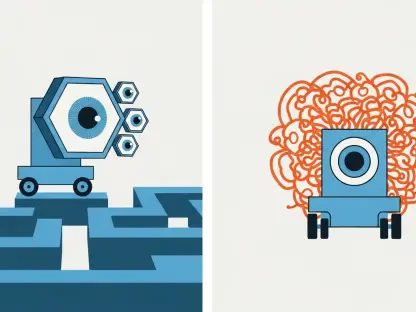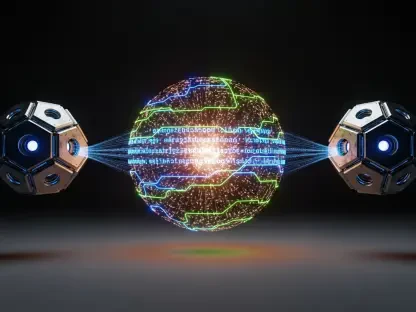Meet Laurent Giraid, a seasoned technologist with deep expertise in artificial intelligence, machine learning, and natural language processing. With a keen focus on the ethical implications of AI, Laurent has been at the forefront of innovative frameworks that shape how enterprises evaluate and deploy AI systems. Today, we dive into his insights on AI evaluation, the challenges of building robust systems, and the transformative potential of tools designed to bridge the gap between human judgment and machine intelligence. Our conversation explores the intricacies of AI judges, organizational hurdles, and the evolving landscape of enterprise AI deployment.
Can you start by explaining what an AI judge is and why it’s becoming such a critical component in AI evaluation for enterprises?
An AI judge, at its core, is an AI system designed to evaluate the outputs of another AI system by scoring or assessing their quality based on predefined criteria. Think of it as a referee for AI models, ensuring that their responses or actions align with what an organization deems acceptable or desirable. Unlike traditional evaluation methods that might rely on static metrics or manual human review, AI judges can operate at scale, providing consistent feedback in real-time. Their importance in enterprise deployments has skyrocketed because companies are deploying AI at unprecedented levels, and they need reliable ways to measure performance. Without these judges, it’s nearly impossible to trust that a model is doing what it’s supposed to do, especially in high-stakes environments like finance or healthcare where errors can be costly.
What motivated the development of frameworks like Judge Builder, and what specific pain points were you aiming to address?
The inspiration behind frameworks like Judge Builder comes from a glaring gap in the AI deployment process: the struggle to define and measure quality. We saw that even with incredibly intelligent models, enterprises were hitting roadblocks because they couldn’t align on what ‘good’ looks like or how to evaluate it systematically. Initially, the focus was on technical solutions—building tools to create these judges. But through early deployments, it became clear that the real issues were organizational, like getting stakeholders on the same page or translating expert knowledge into actionable criteria. Judge Builder was designed to tackle these pain points by providing not just a technical platform, but also a structured process to guide teams through defining quality and scaling evaluation.
What are some of the biggest challenges organizations face when trying to build effective AI judges?
Building AI judges is a complex endeavor, and the challenges often boil down to people and process rather than pure technology. One major hurdle is getting stakeholders to agree on what quality means—different departments or experts might have conflicting views on what constitutes a good output. Then there’s the issue of capturing domain expertise, especially when subject matter experts are scarce or overcommitted. You’re trying to distill nuanced human judgment into something a machine can replicate, which is no small feat. Finally, deploying these systems at scale introduces logistical and technical barriers, like ensuring the judges remain accurate as data and use cases evolve. Each of these challenges requires a blend of technical innovation and organizational strategy to overcome.
I’ve heard that the intelligence of AI models isn’t the primary bottleneck in deployments. Can you elaborate on what’s really holding things back?
Absolutely. While AI models today are remarkably sophisticated, their raw intelligence isn’t the issue. The real bottleneck lies in defining what we want these models to achieve and then verifying whether they’ve achieved it. Many organizations struggle with articulating specific goals or quality standards for their AI systems. Even when they do, there’s often a gap in measuring whether the model’s outputs align with those expectations. This is where evaluation frameworks become crucial—they help bridge that gap by providing a way to systematically assess performance against human-defined benchmarks, ensuring the model’s smarts are applied in the right direction.
Can you explain the concept of the ‘Ouroboros problem’ in AI evaluation and why it poses such a challenge?
The Ouroboros problem, named after the ancient symbol of a snake eating its own tail, refers to the circular challenge of using one AI system to evaluate another. If you’re relying on an AI judge to assess the quality of another AI’s outputs, how do you know the judge itself is trustworthy? It’s a loop of validation that can undermine confidence in the entire system. This is a significant challenge because it risks creating a false sense of reliability—your judge might approve outputs that are flawed simply because it shares the same biases or limitations as the system it’s evaluating. Breaking this cycle requires grounding the evaluation in something outside the AI loop, like human expertise.
How does measuring the ‘distance to human expert ground truth’ help address the Ouroboros problem in AI evaluation?
Measuring the distance to human expert ground truth is a way to anchor AI evaluation in something tangible and trustworthy. Essentially, it involves comparing how an AI judge scores outputs to how a human expert would score them. By minimizing the gap between the two, you ensure that the judge acts as a reliable proxy for human judgment, breaking the circularity of the Ouroboros problem. This approach builds trust because it ties the AI’s assessments to real-world standards defined by domain experts, rather than relying solely on another layer of potentially flawed AI logic. It’s about creating a benchmark that reflects human values and expectations.
What are some standout features of a framework like Judge Builder that make it particularly effective for building AI judges?
Frameworks like Judge Builder stand out because they combine technical robustness with practical usability. For instance, they often integrate seamlessly with existing tools like MLflow for model management or prompt optimization systems to refine judge behavior. They also offer version control, allowing teams to track how judges evolve over time and ensure consistency. Another key feature is the ability to deploy multiple judges simultaneously, each focusing on a different aspect of quality—like factual accuracy or tone—rather than relying on a single, vague metric. This granularity helps pinpoint exactly where a model might be falling short, making it easier to iterate and improve.
How does breaking down vague quality criteria into specific, targeted judges improve the evaluation process?
When you try to evaluate something as broad as ‘overall quality’ with a single judge, you often end up with results that are too ambiguous to act on. A failing score tells you something’s wrong, but not what or how to fix it. By breaking down vague criteria into specific judges—say, one for relevance, one for accuracy, and one for clarity—you get much more actionable insights. Each judge focuses on a narrow slice of quality, so you can identify exactly where the model needs improvement. This approach also mirrors how humans naturally assess things, looking at multiple dimensions rather than a single catch-all judgment, which ultimately leads to better alignment with business needs.
What lessons have you learned about the importance of collaboration and alignment when building AI judges for enterprises?
One of the biggest lessons is that building AI judges isn’t just a technical problem—it’s a people problem. We’ve found that even within a single organization, experts often disagree on what constitutes a good output, sometimes dramatically. Getting those ‘many brains’ to align requires structured collaboration, like workshops or batched annotation processes where small groups review examples and measure agreement. Another key insight is that you don’t need vast amounts of data or time to start—focusing on a handful of well-chosen edge cases can reveal misalignments early and set the foundation for a strong judge. Ultimately, success hinges on turning subjective human judgment into explicit, agreed-upon criteria.
What is your forecast for the future of AI evaluation systems in enterprise environments?
I believe AI evaluation systems will become even more central to enterprise AI strategies over the next few years. As organizations move beyond pilot projects to full-scale deployments, the demand for reliable, scalable ways to measure quality will only grow. I expect we’ll see more sophisticated frameworks that blend human expertise with machine efficiency, perhaps incorporating real-time feedback loops where judges evolve alongside the systems they evaluate. There’s also likely to be a push toward standardization, where industries develop shared benchmarks for AI quality, much like we see in other regulated fields. Ultimately, the future of AI in enterprises will depend on trust, and evaluation systems like AI judges will be the cornerstone of building that trust.









